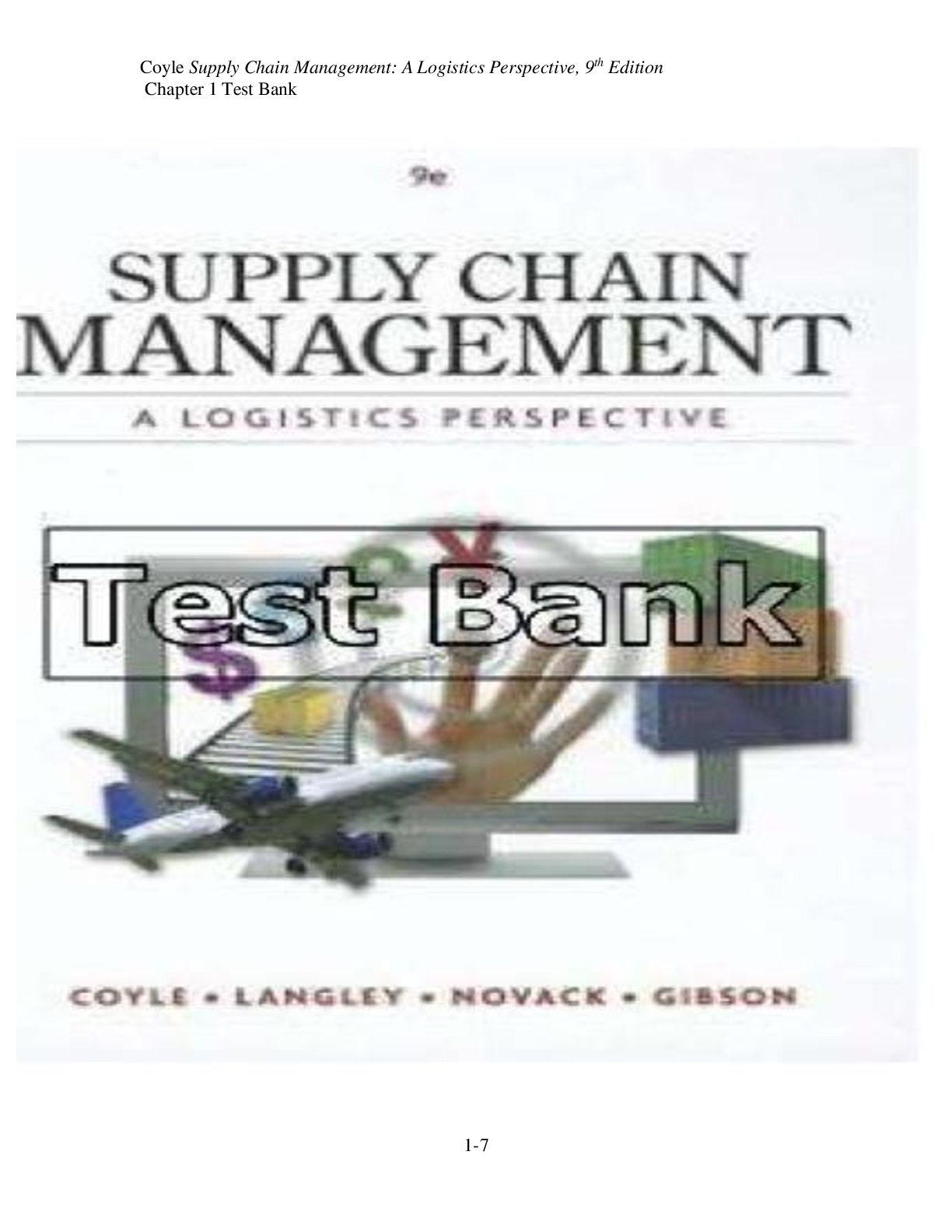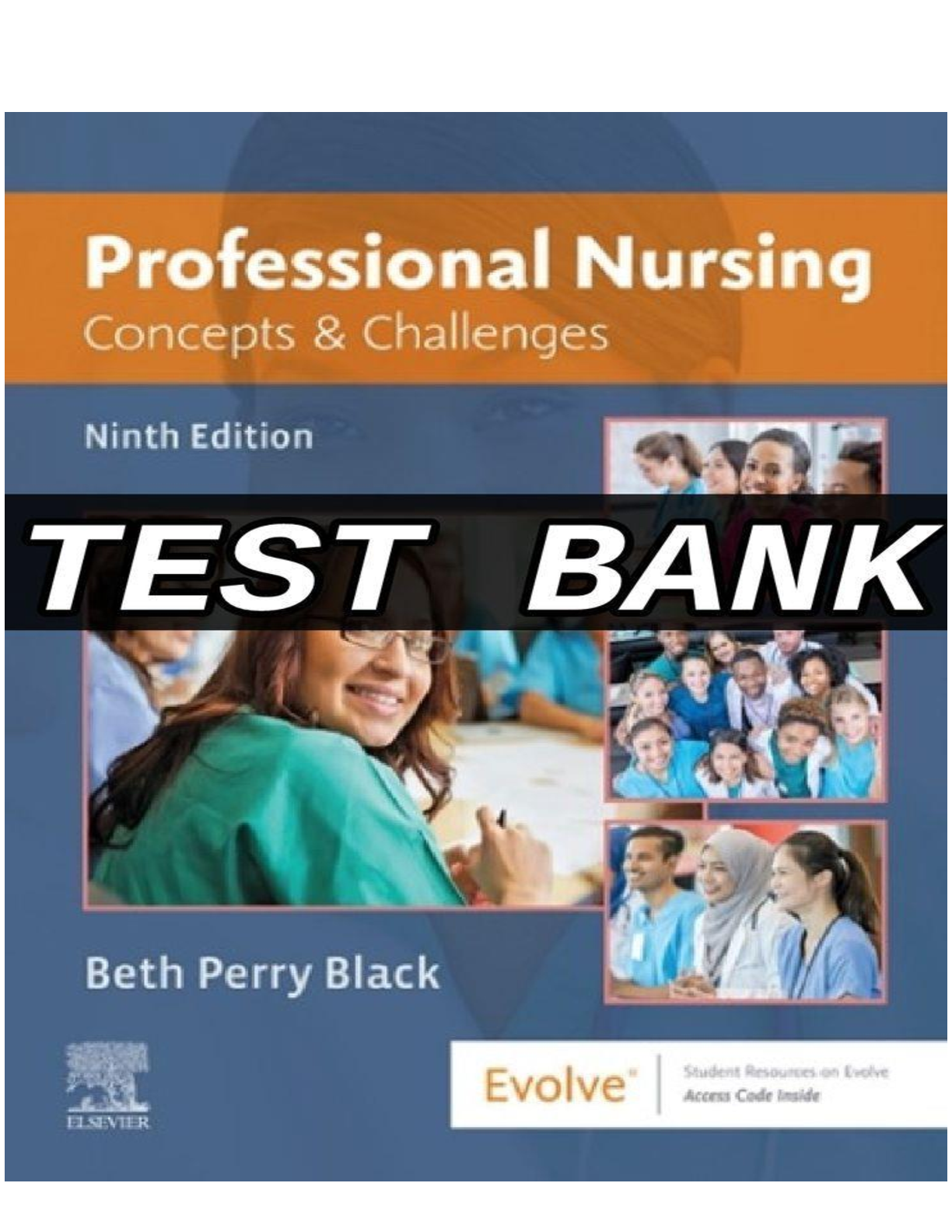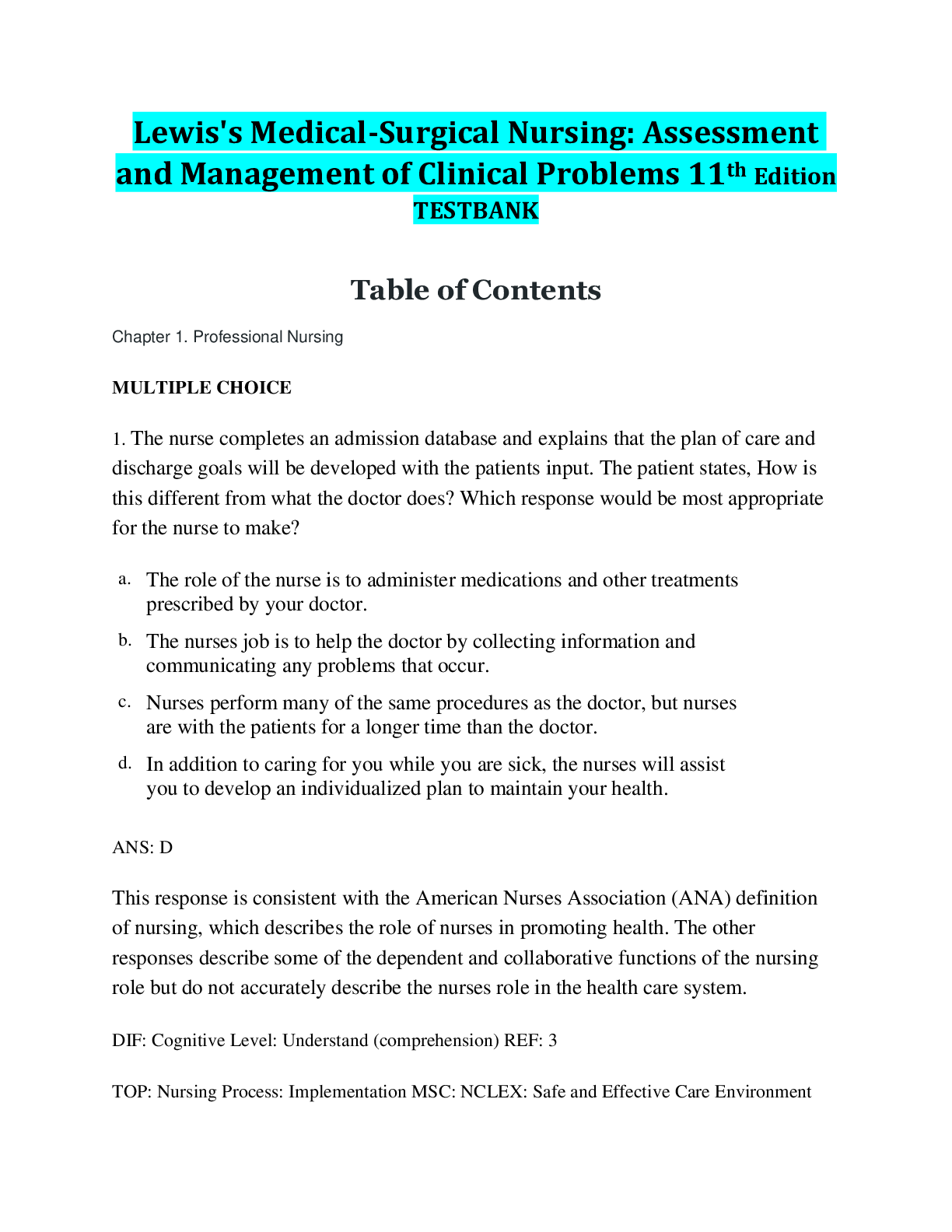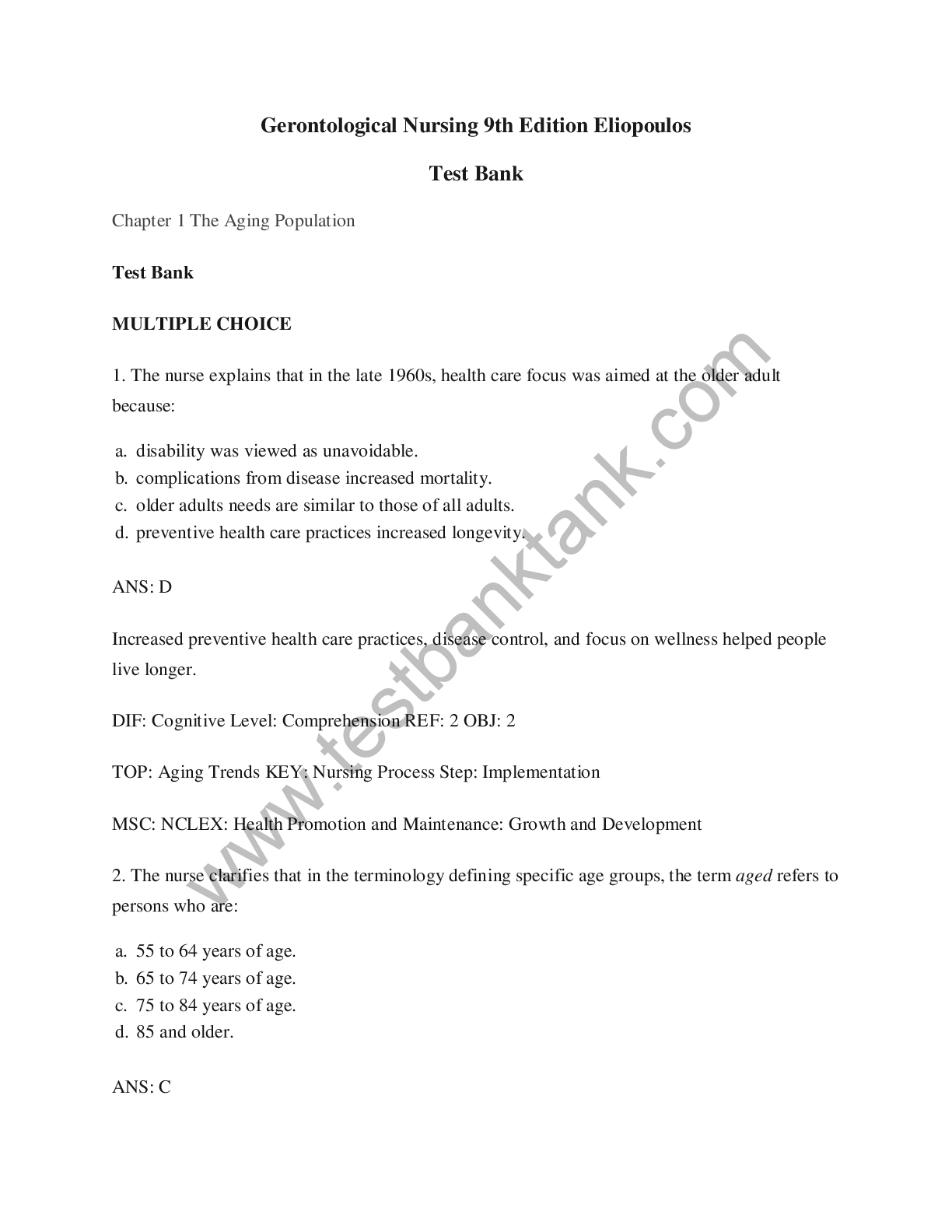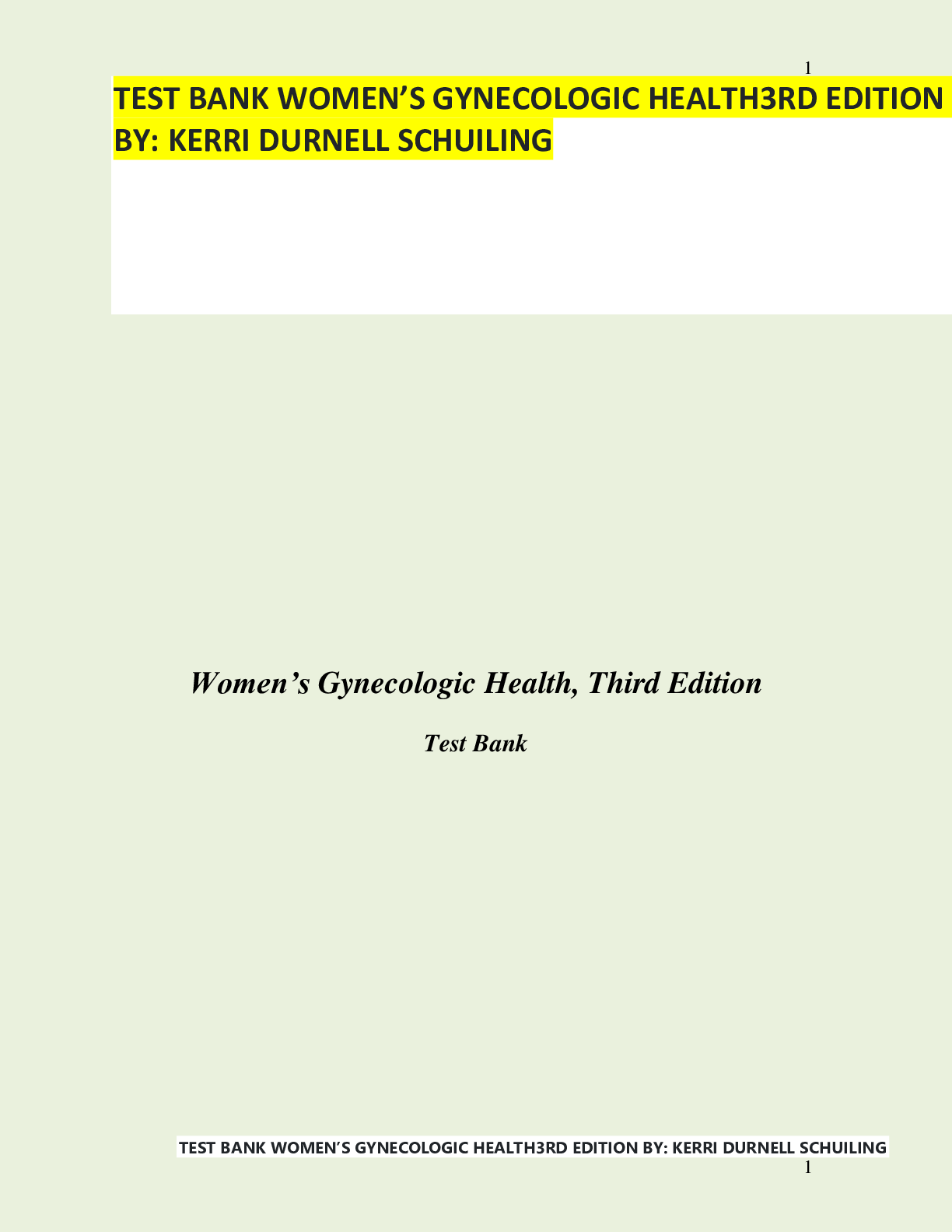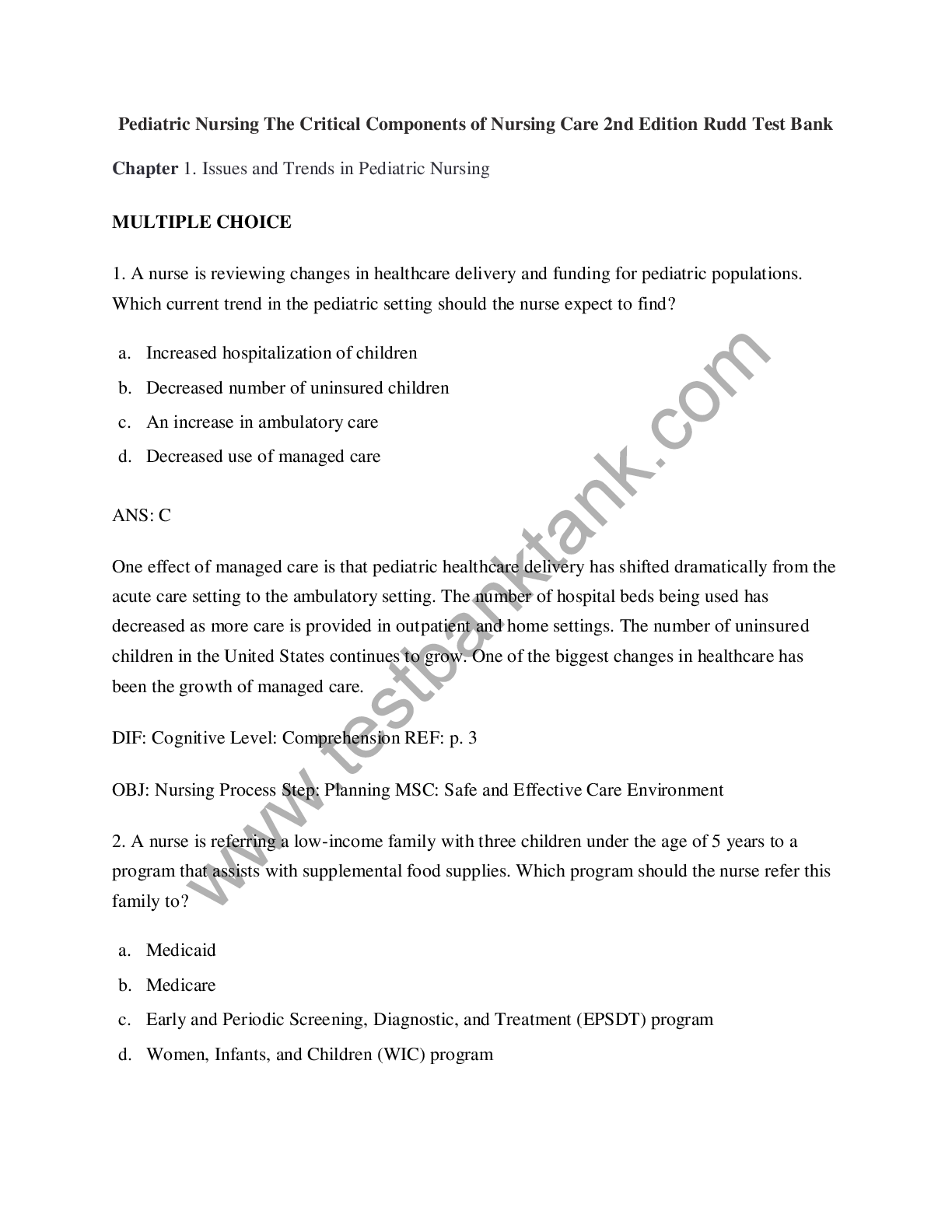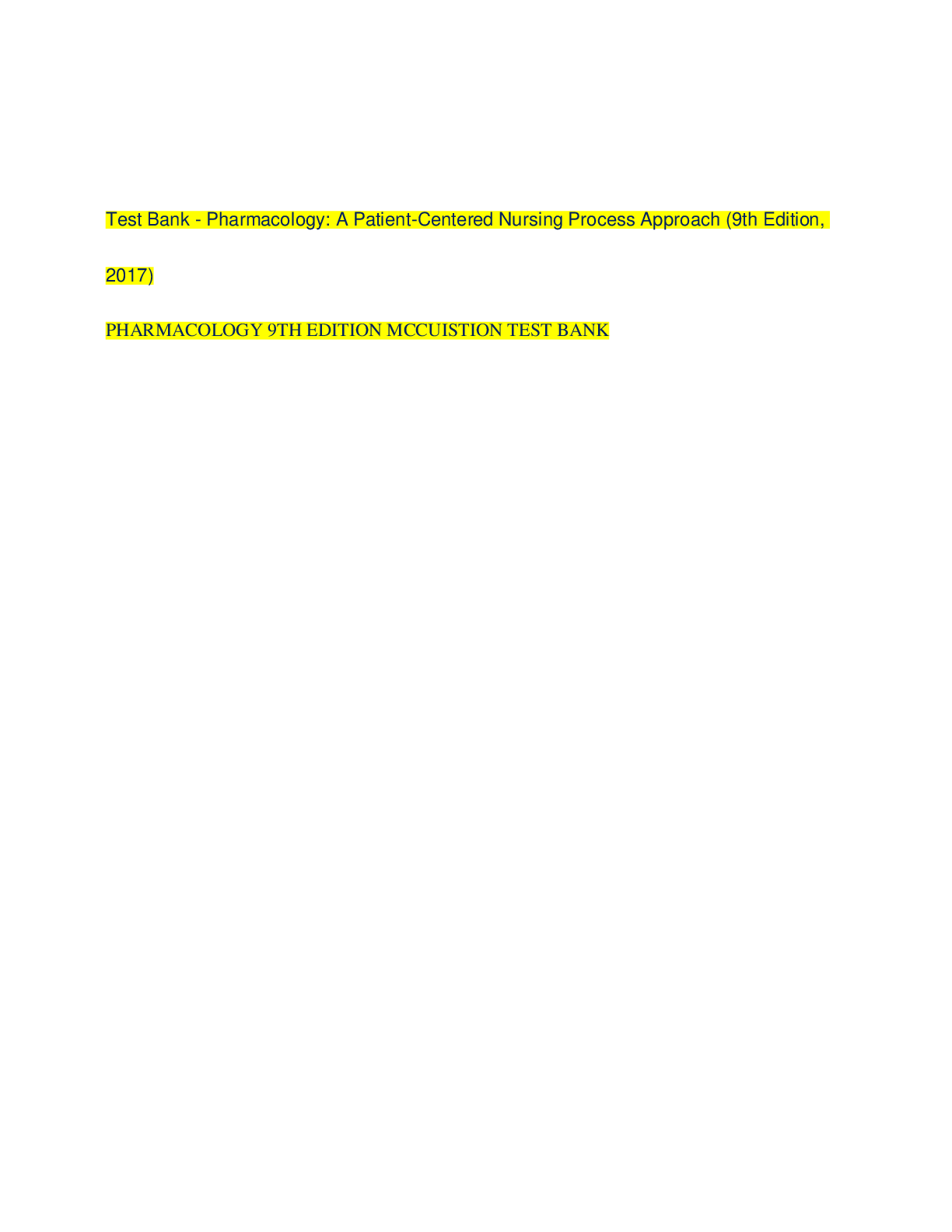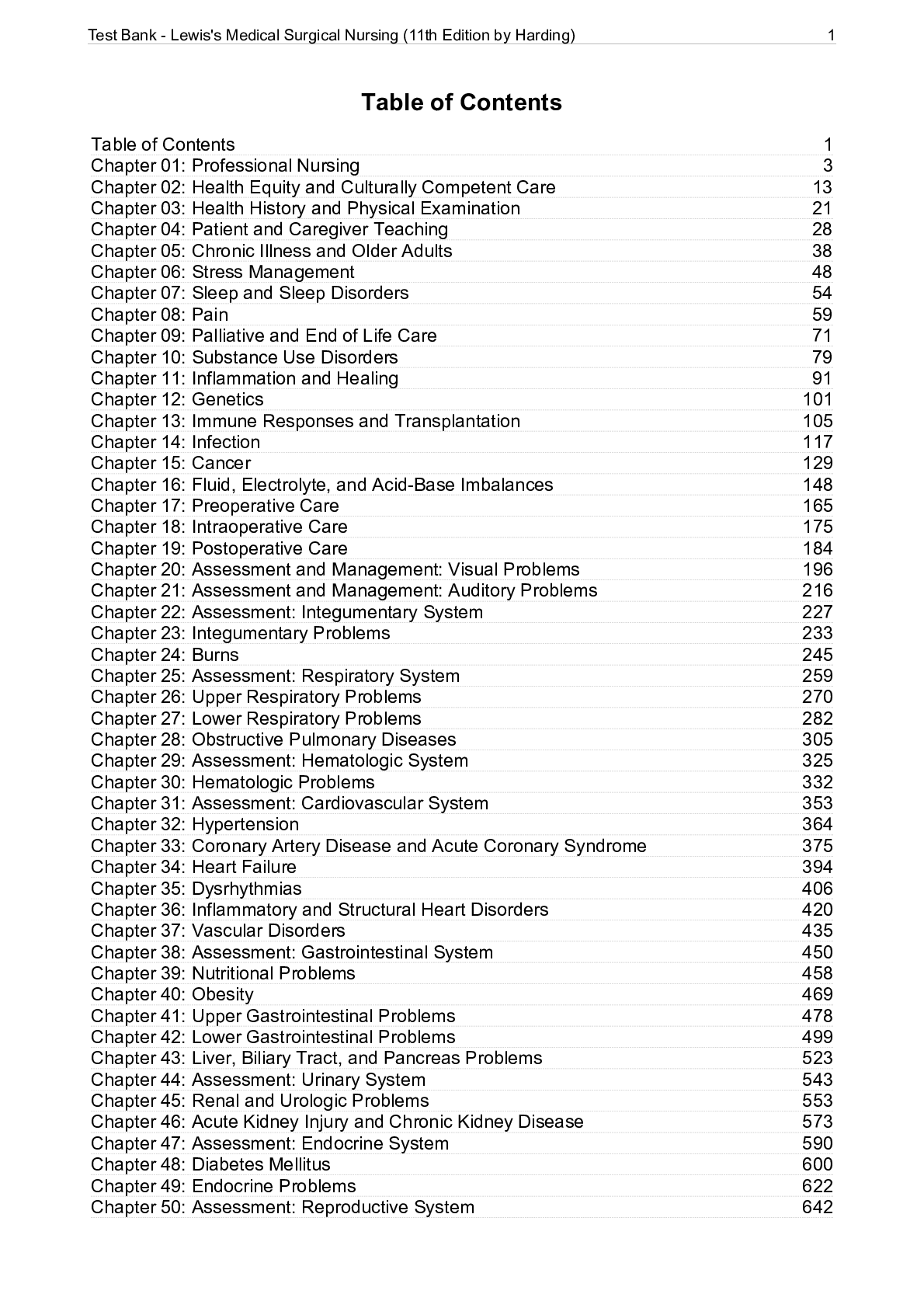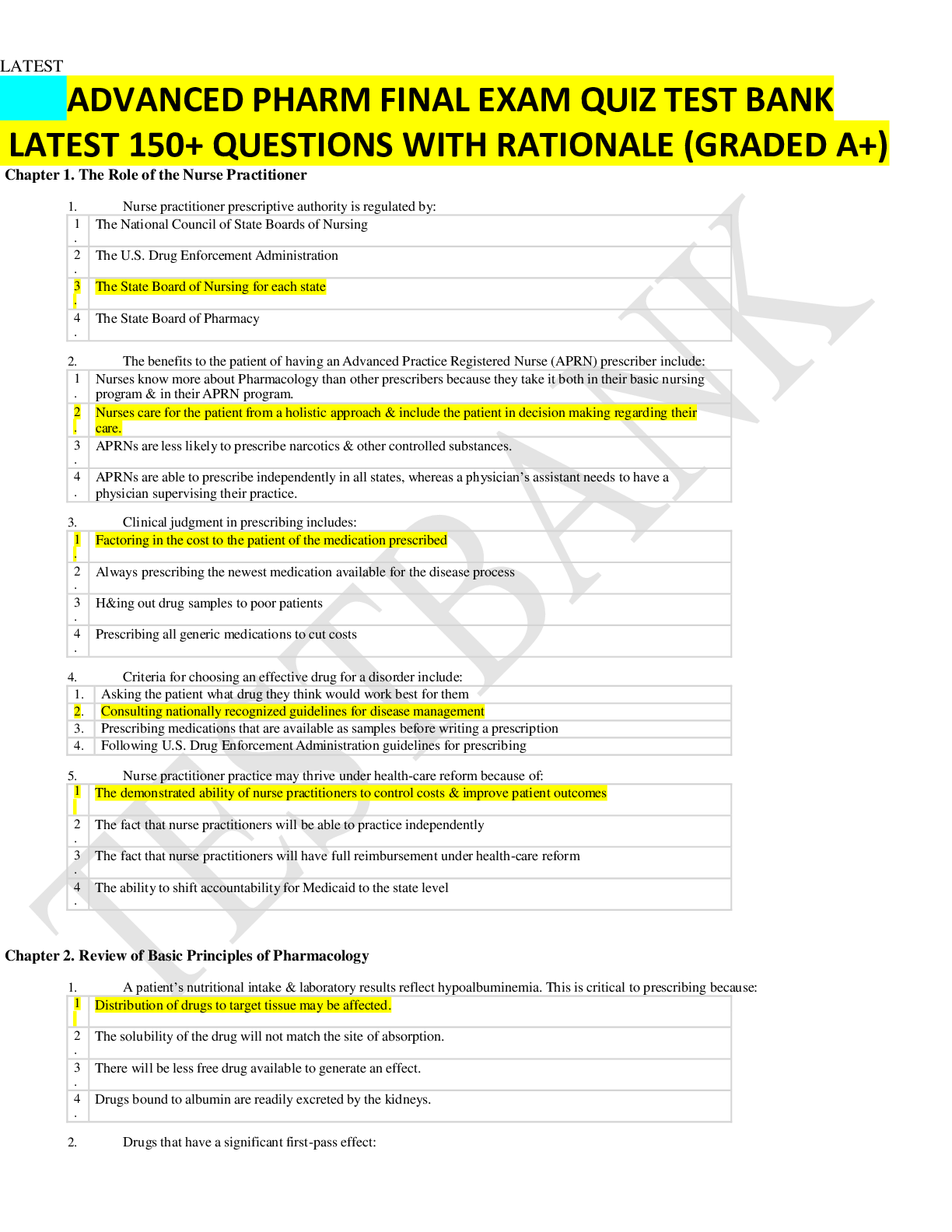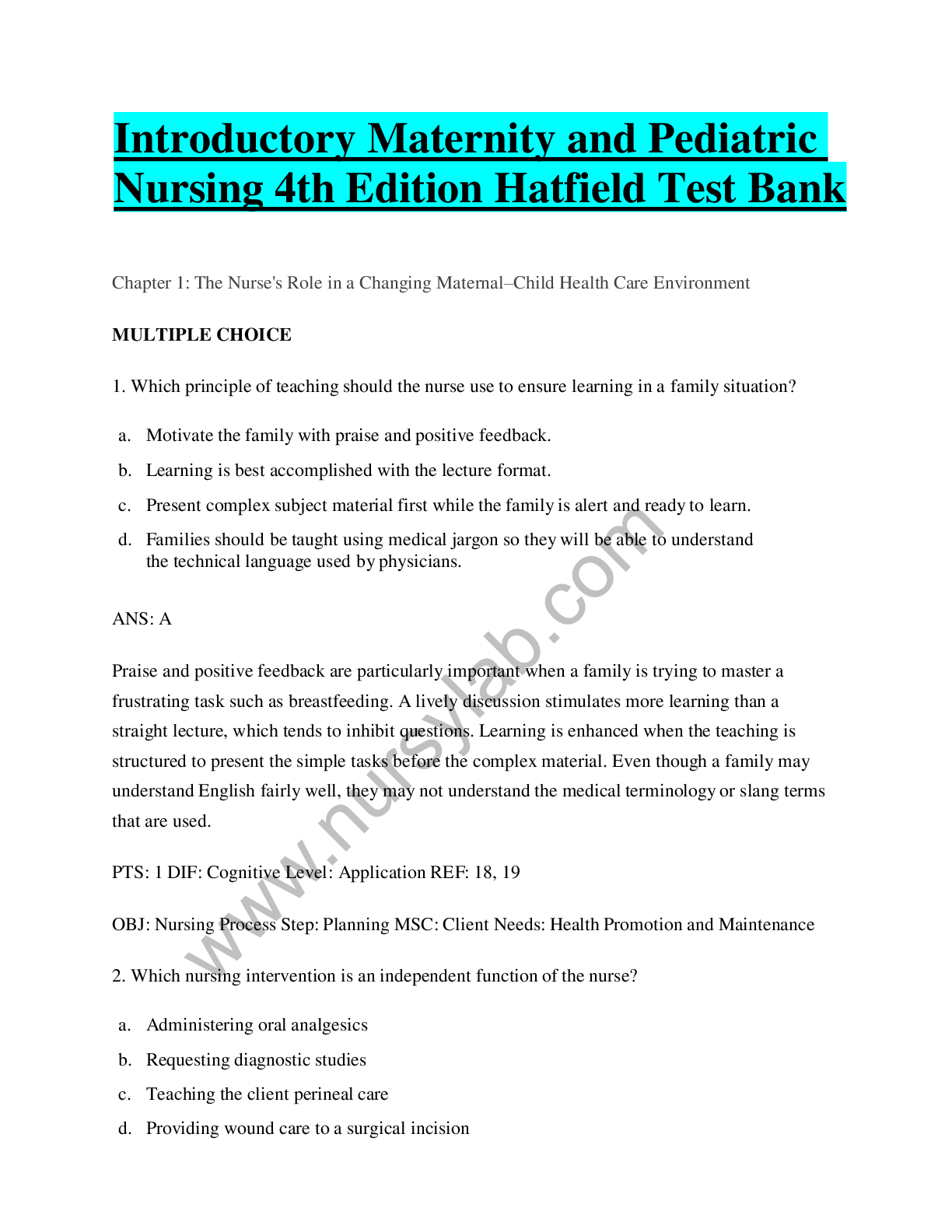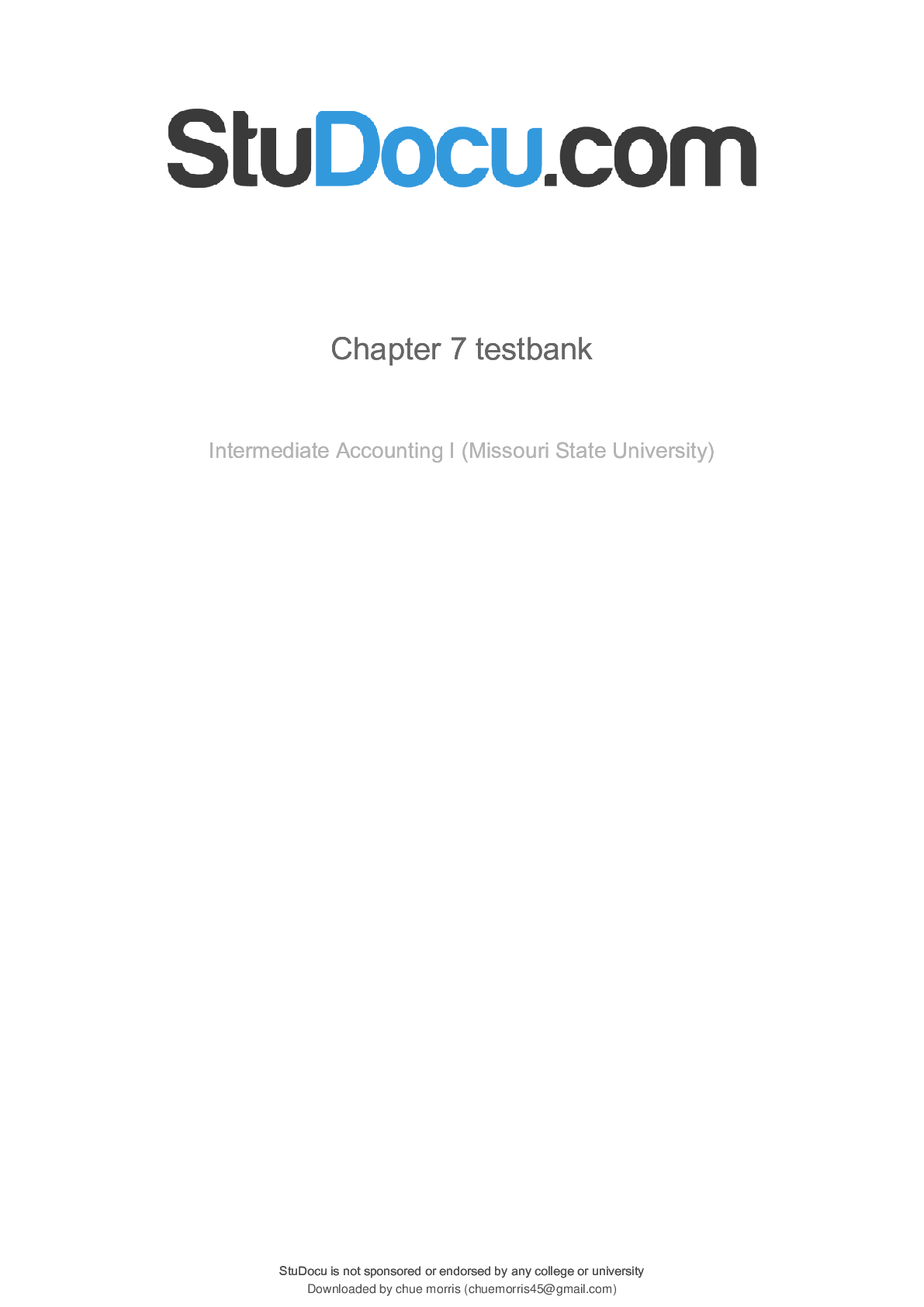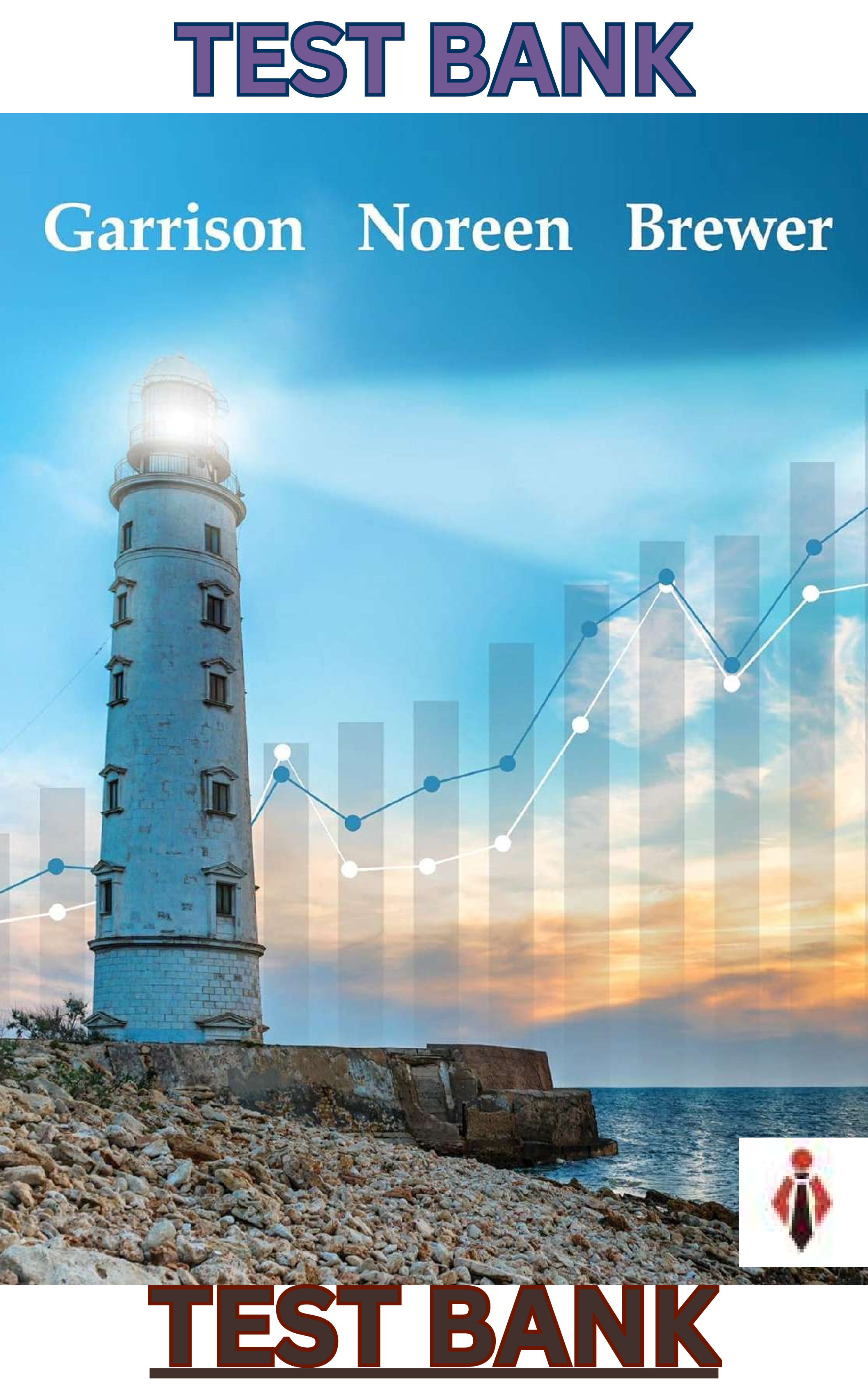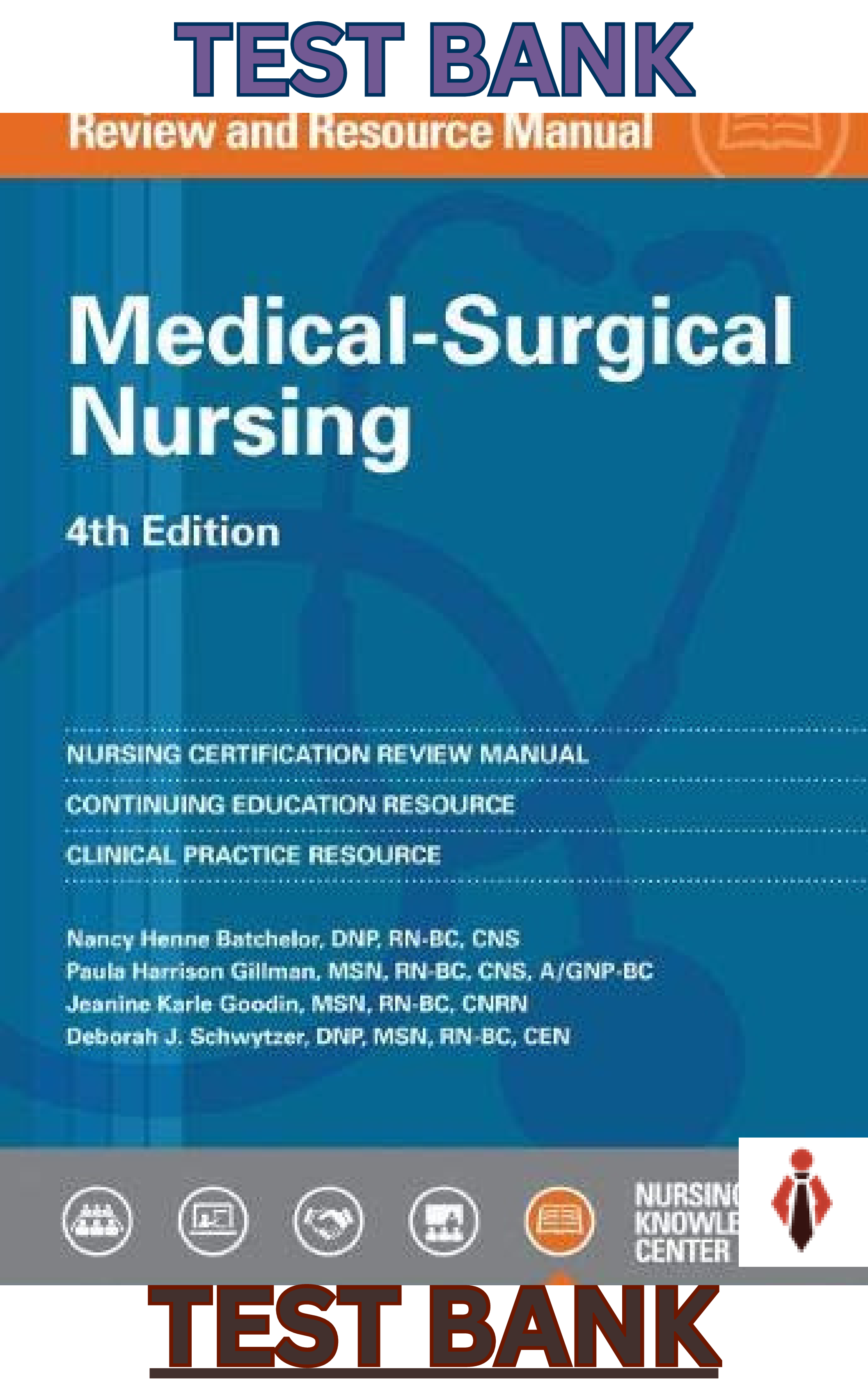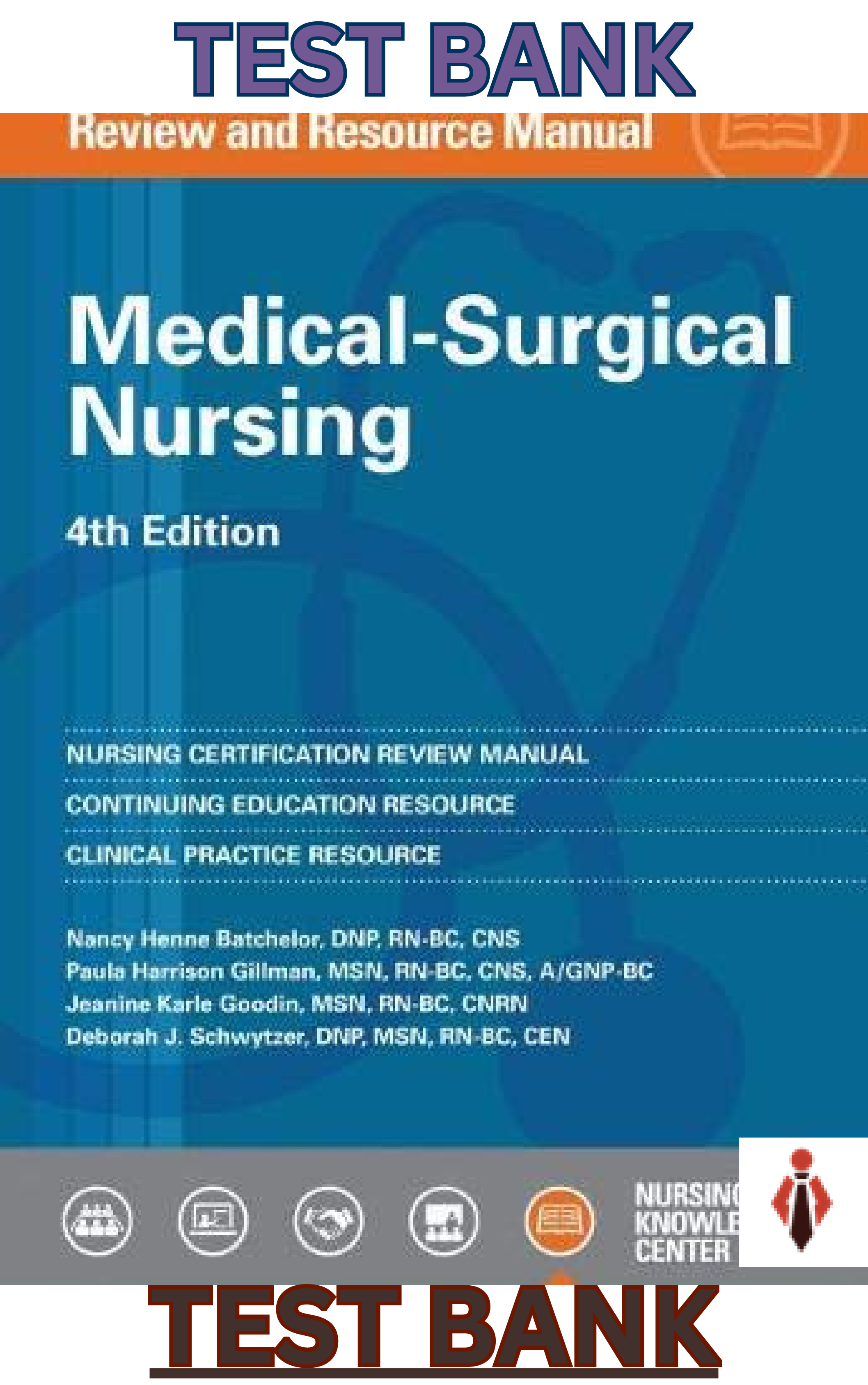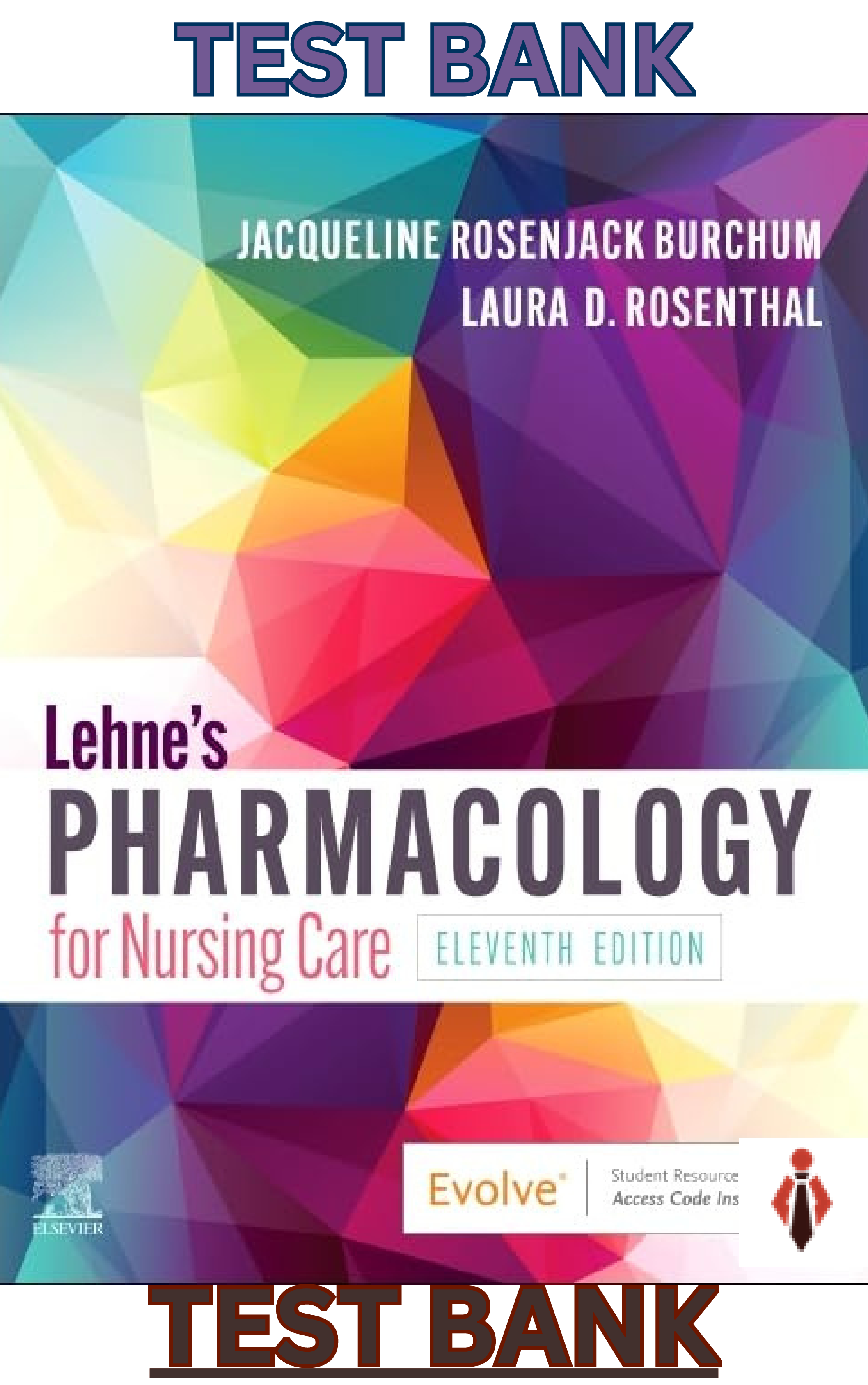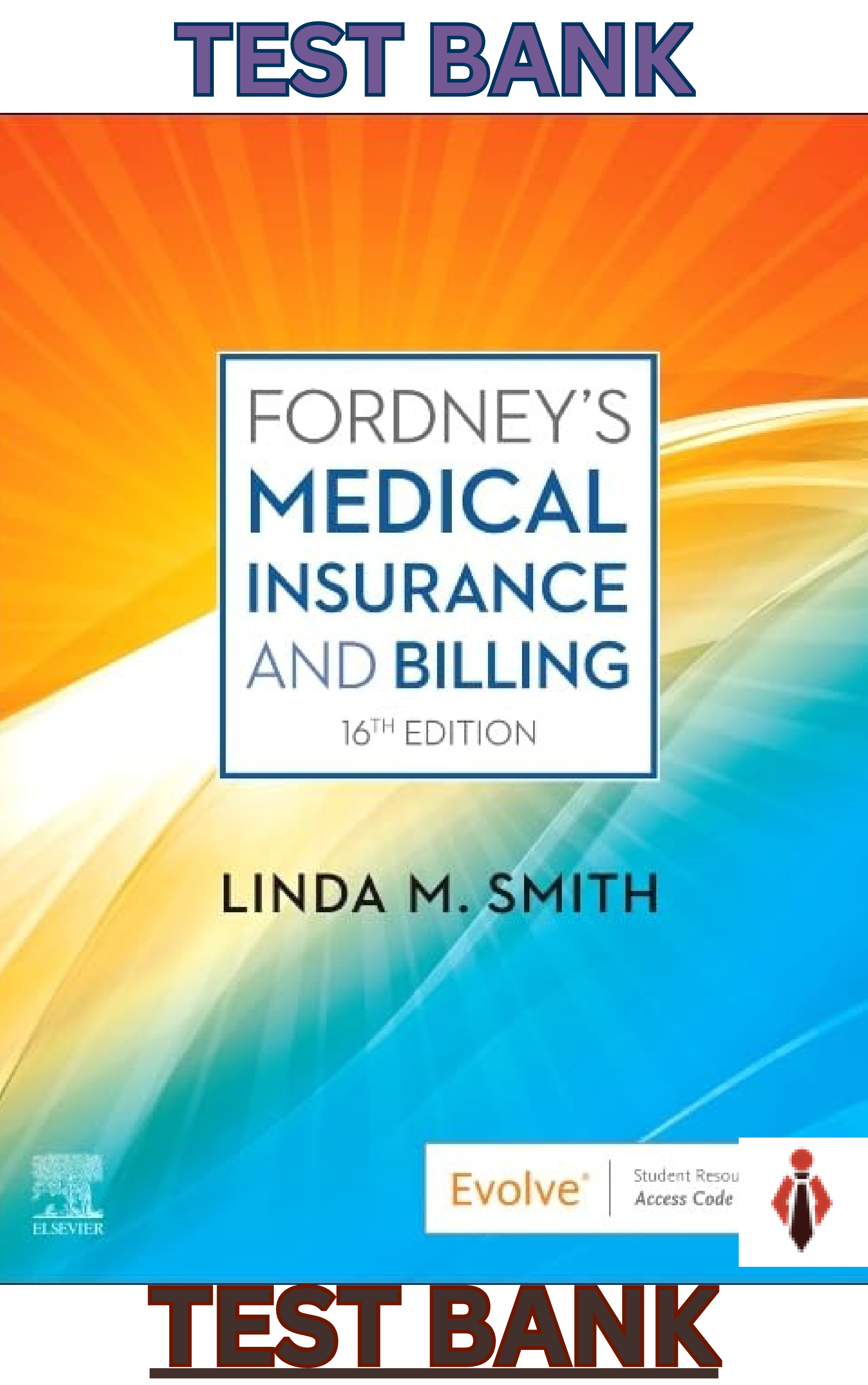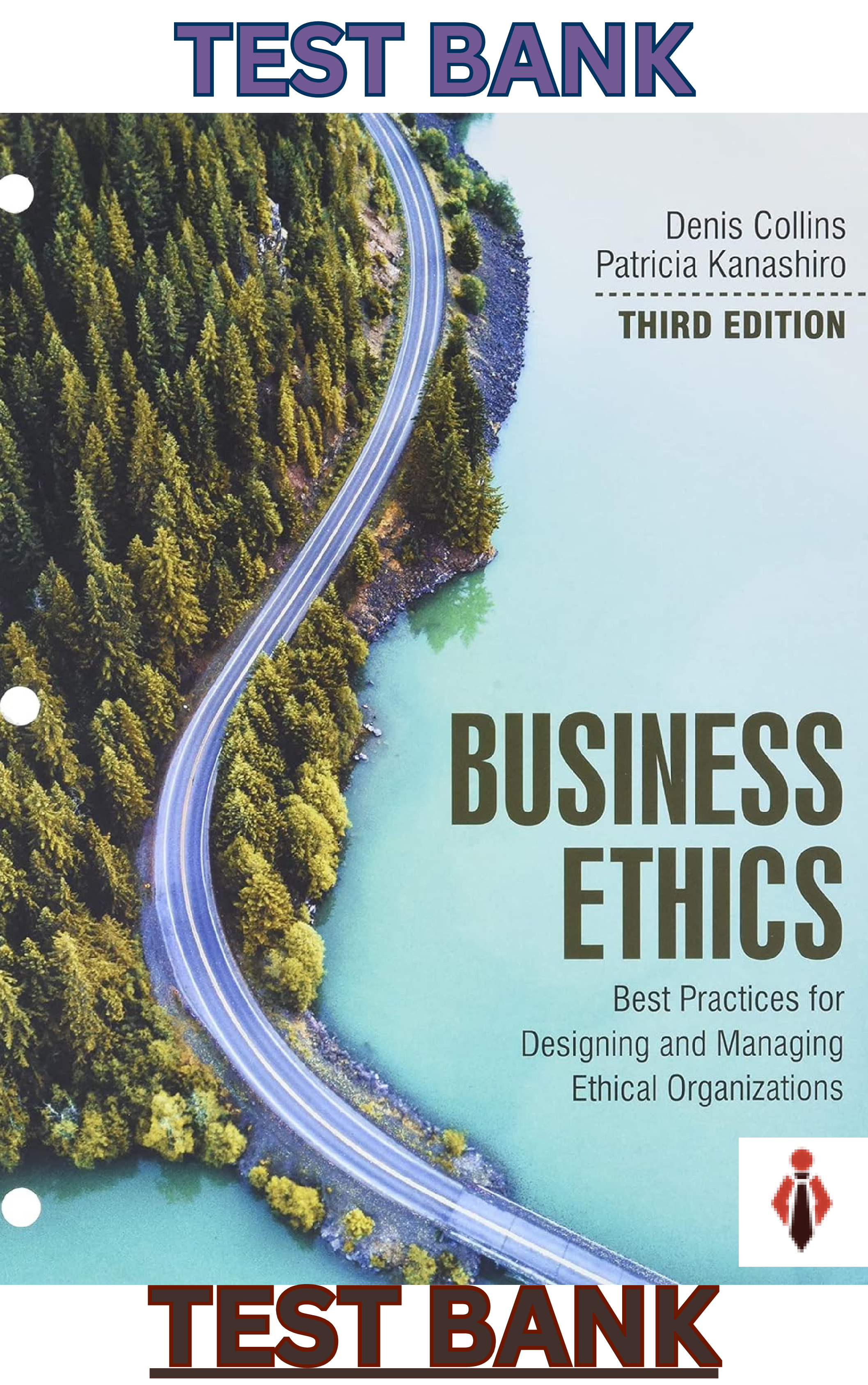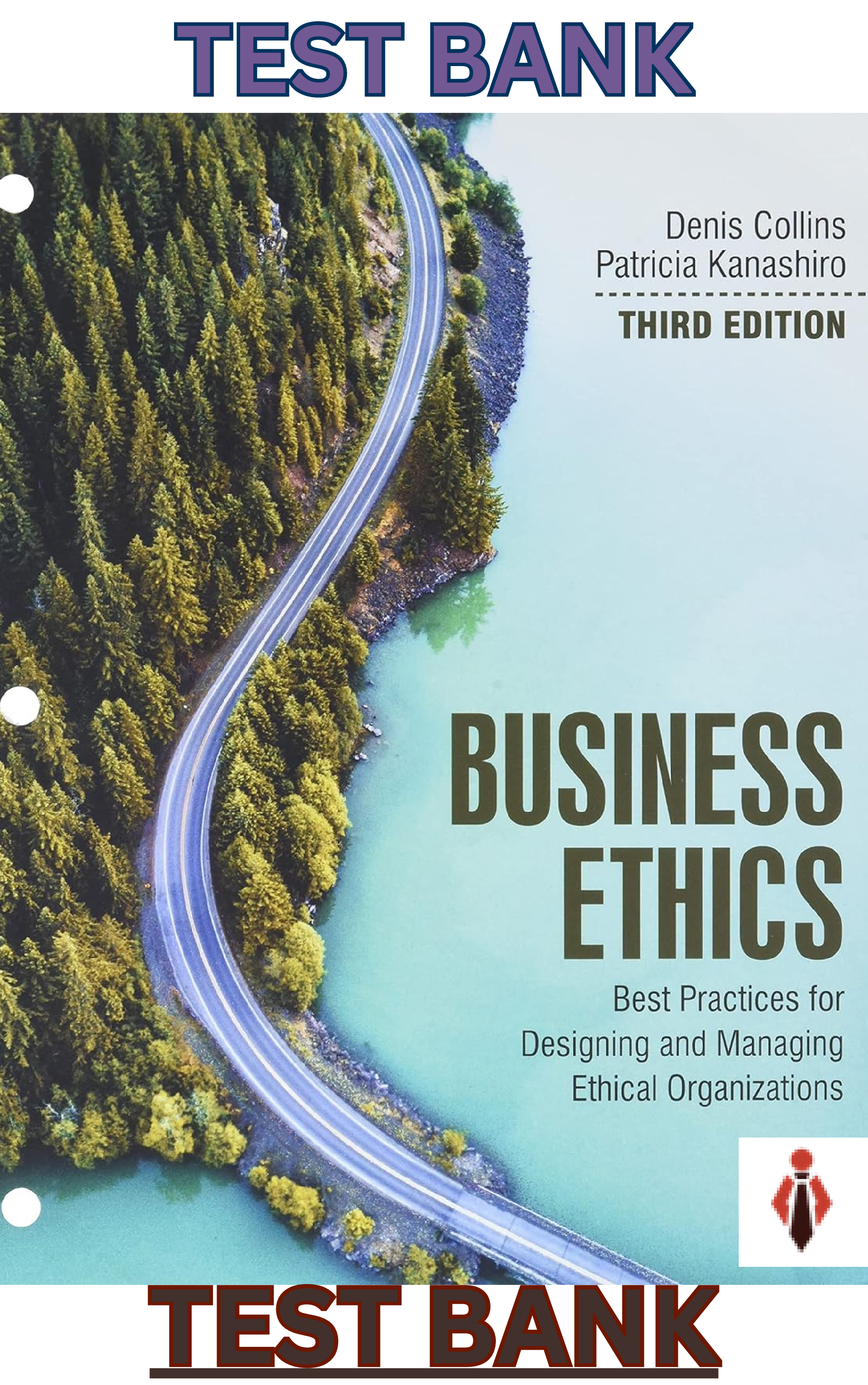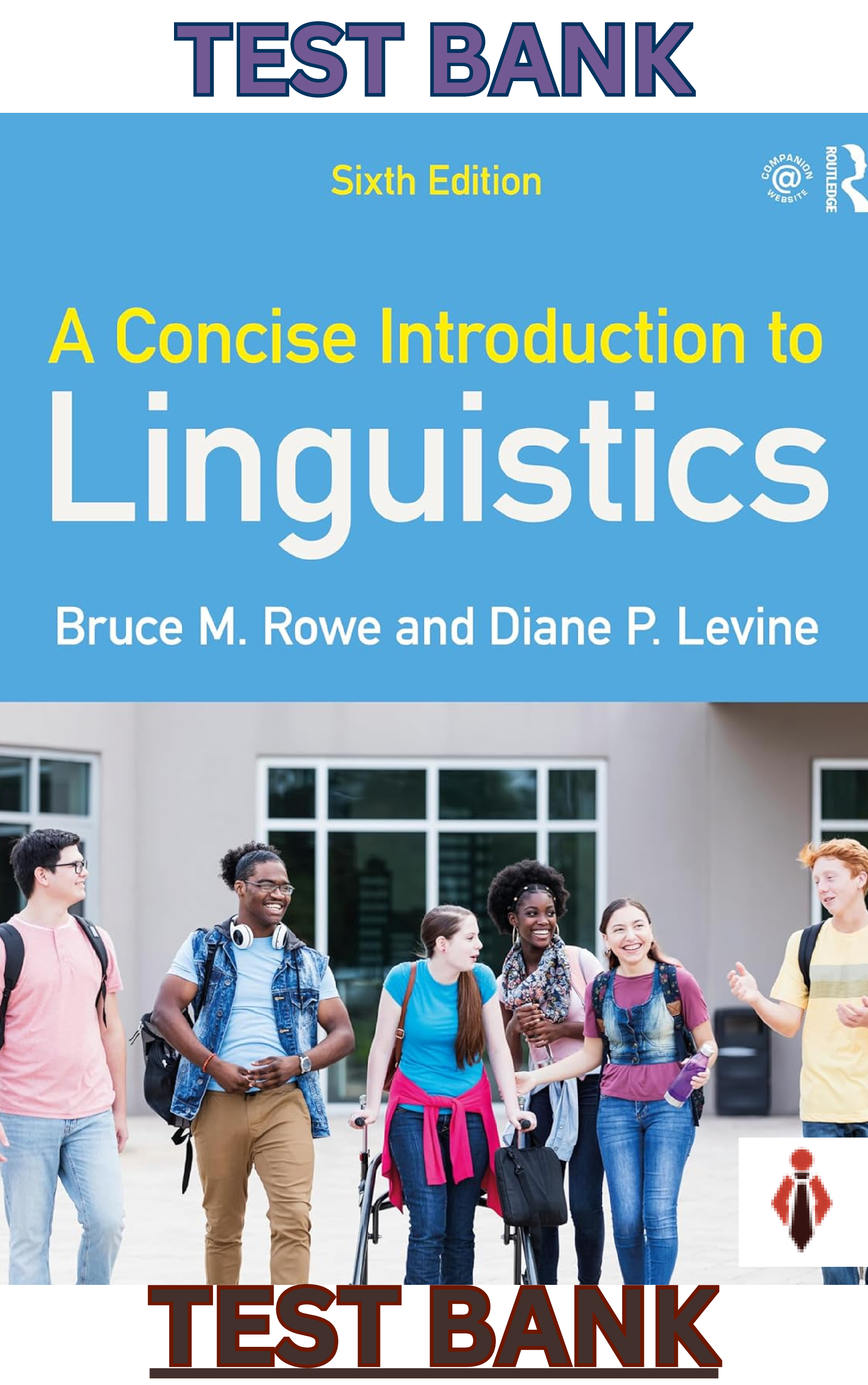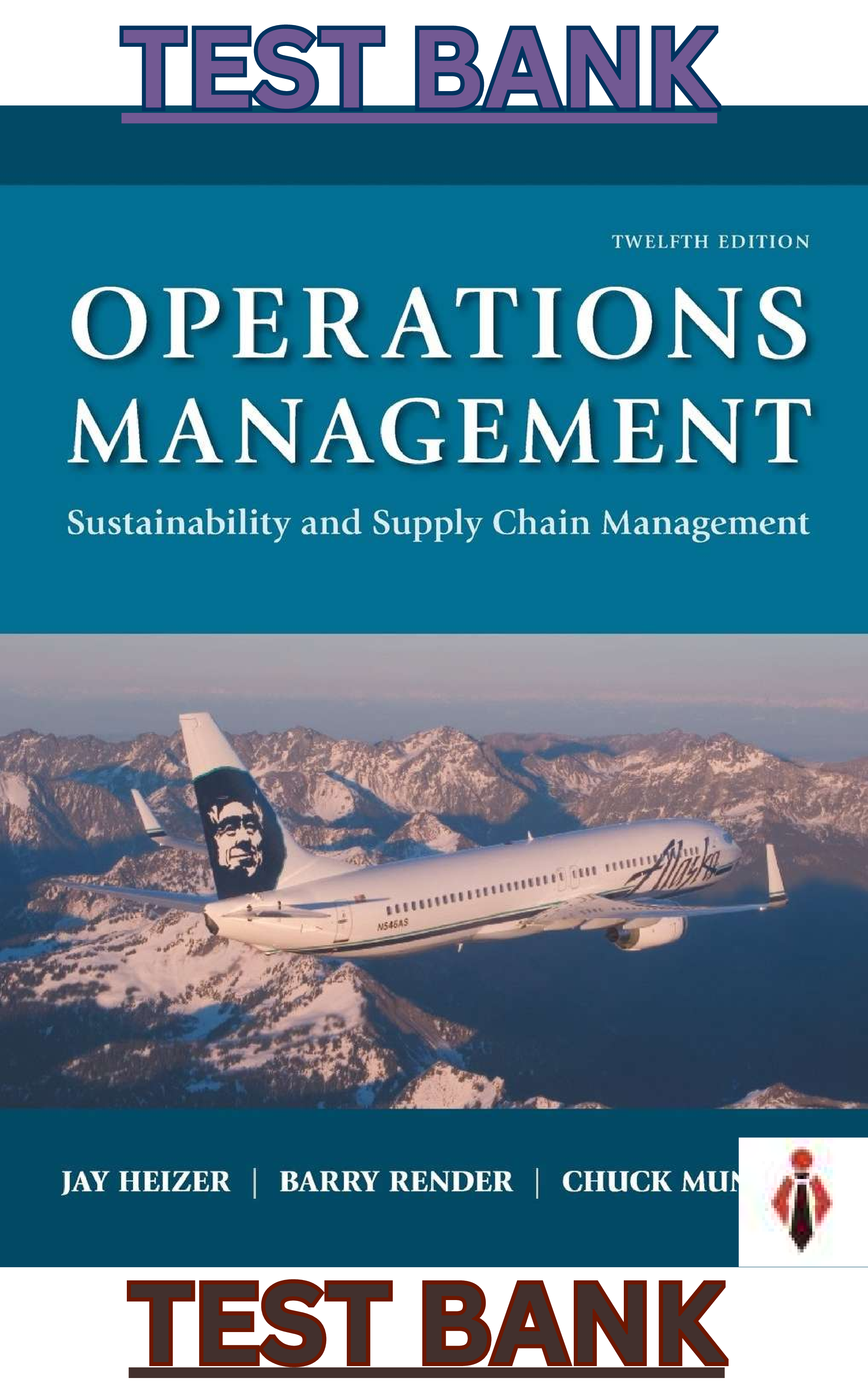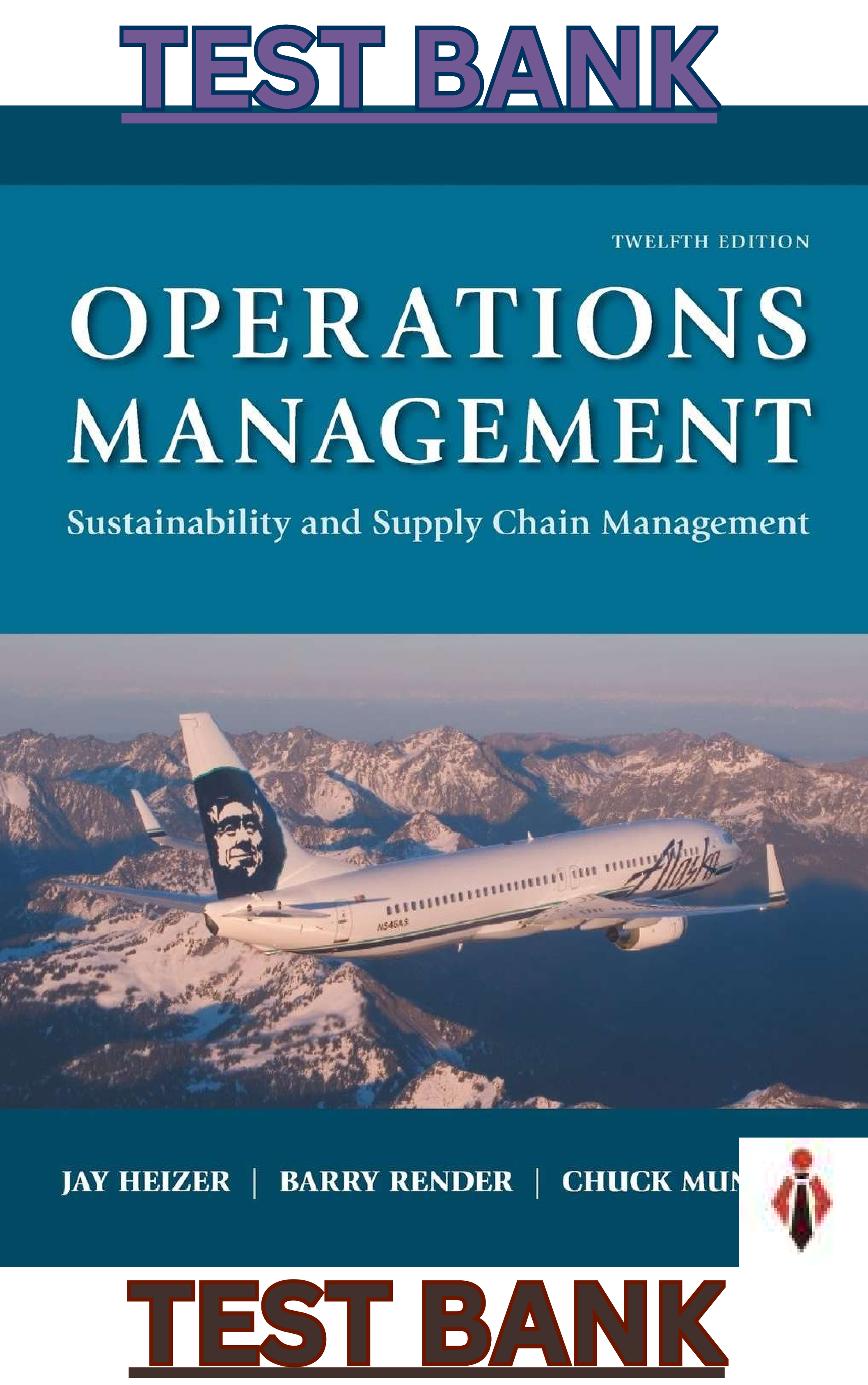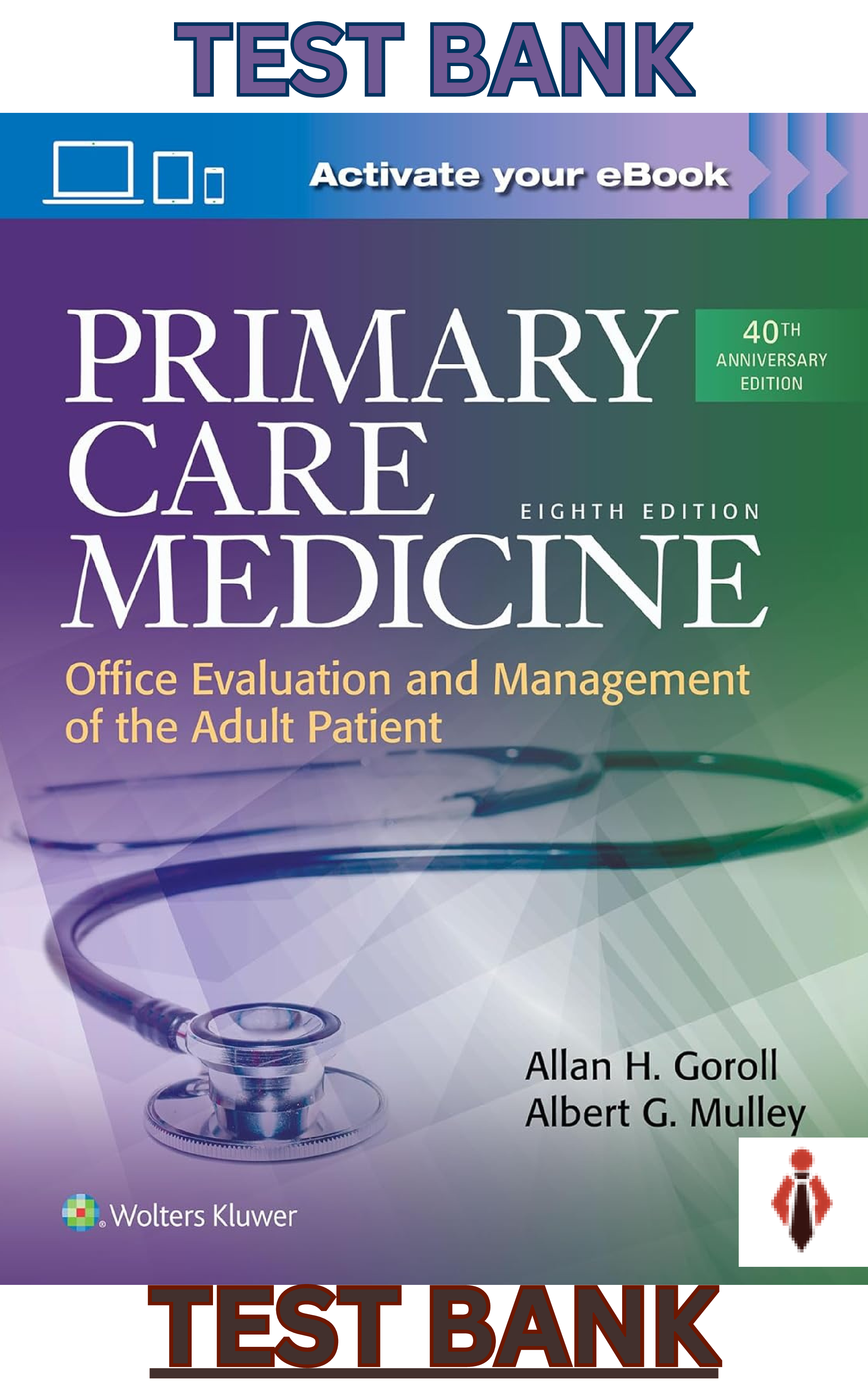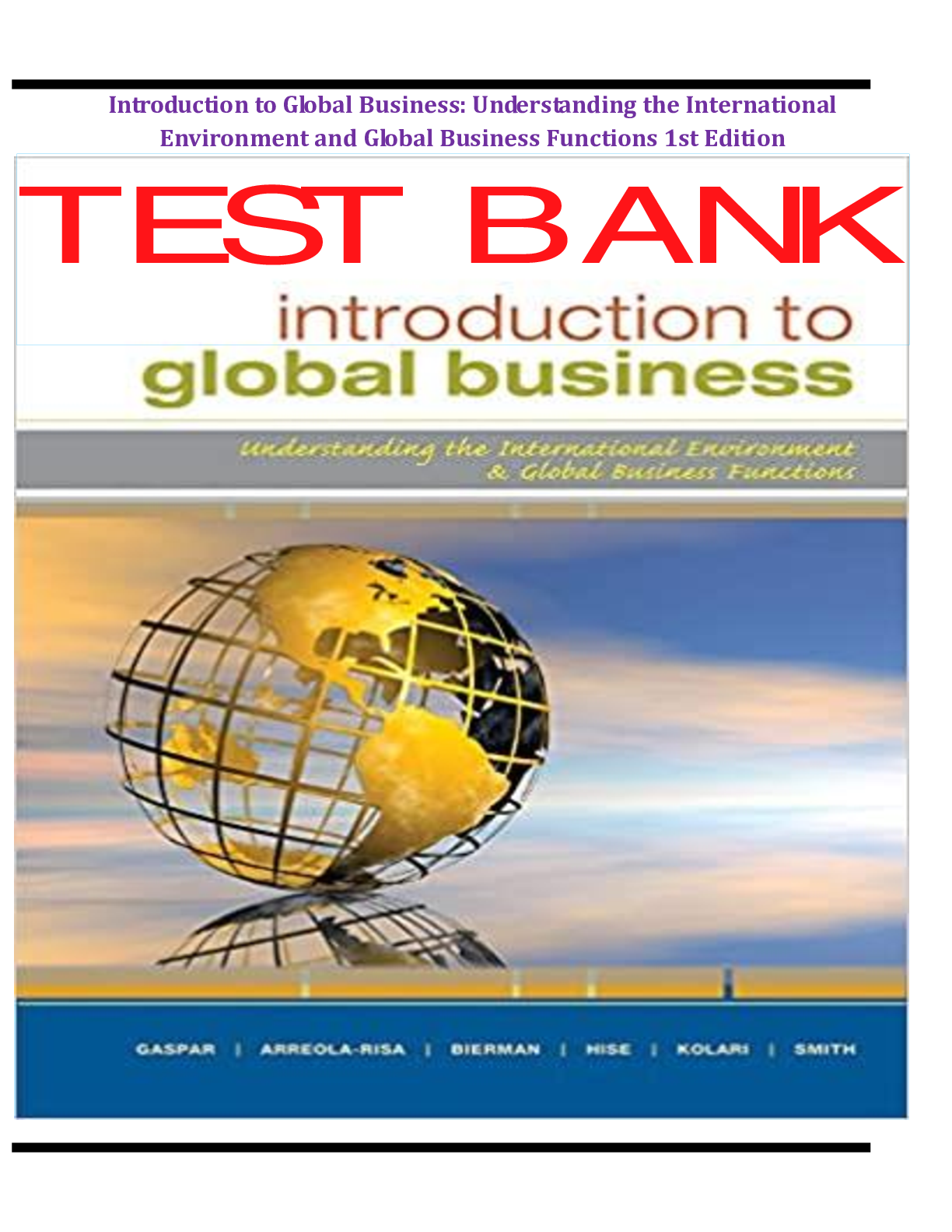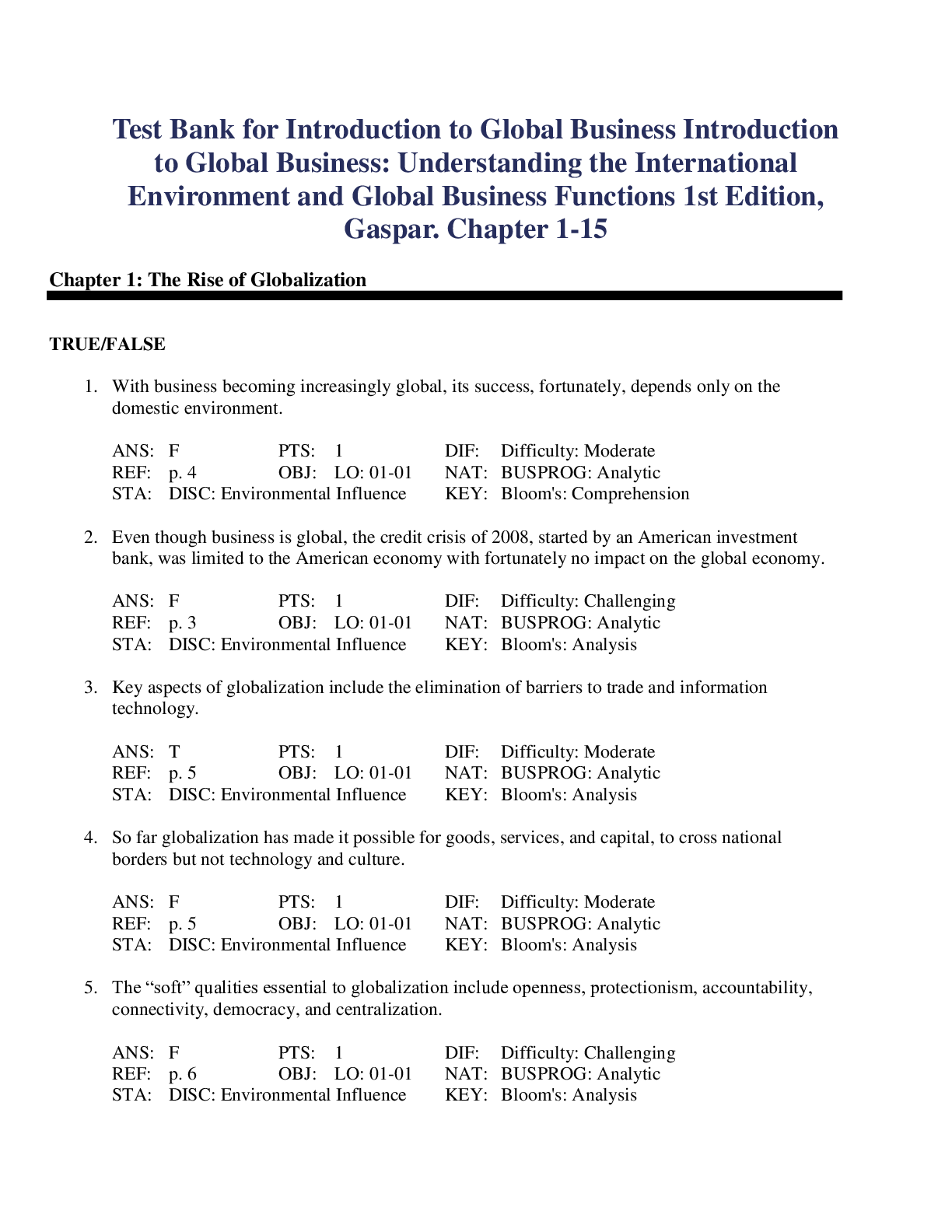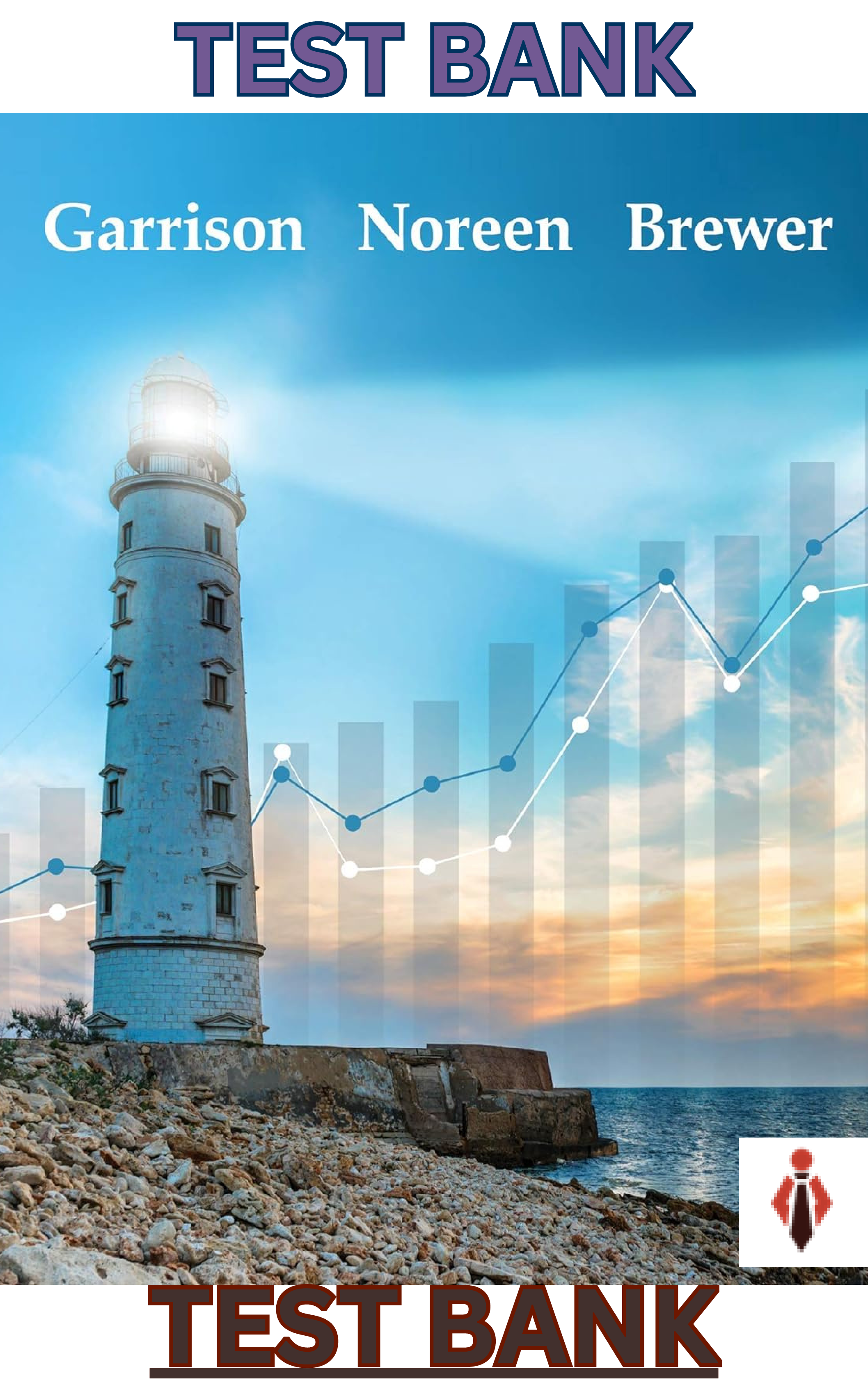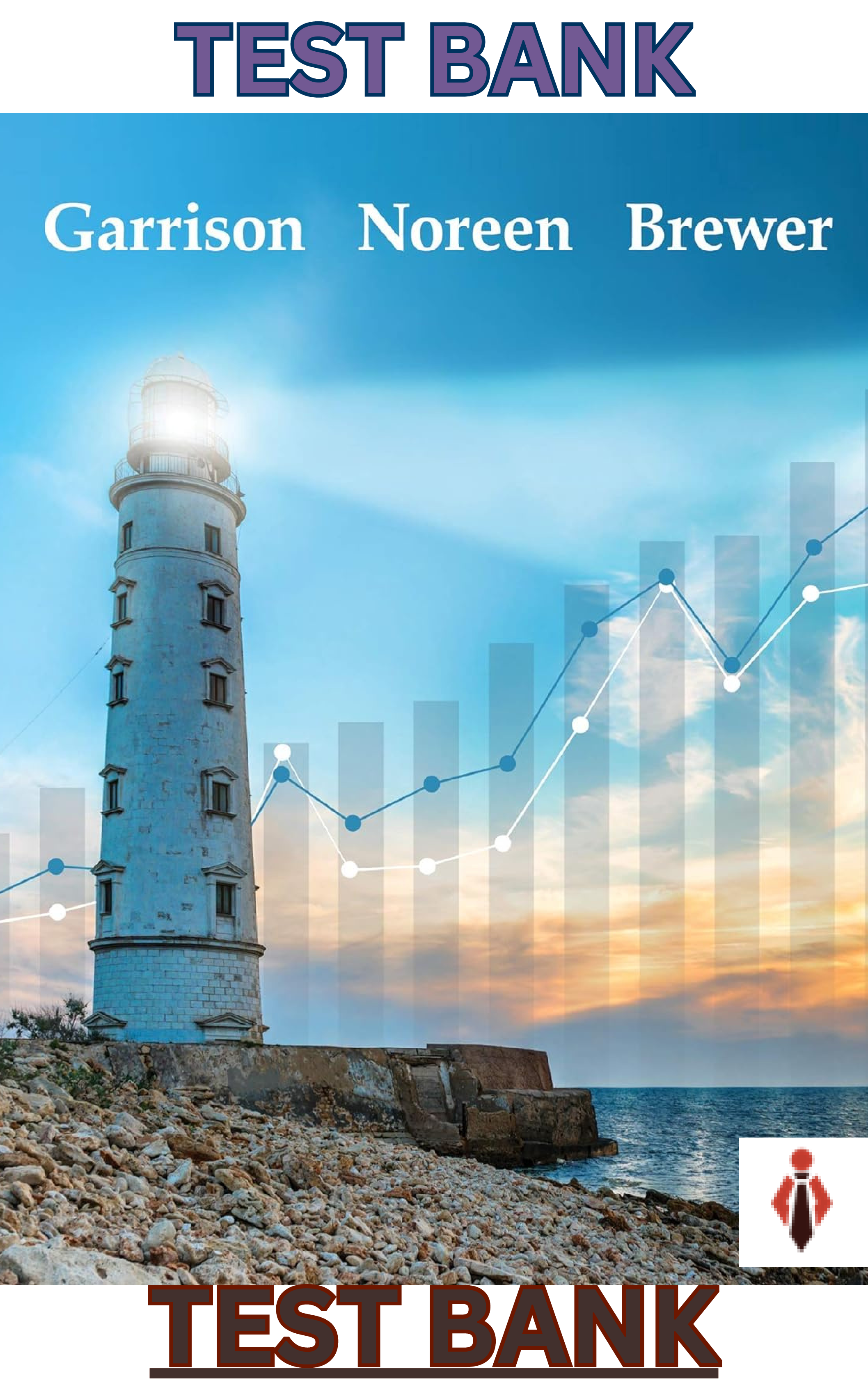Health Care > TEST BANK > TEST BANK FOR Understanding Pharmacology, Essentials for Medication Safety, 2nd Edition . ALL CHAPTE (All)
TEST BANK FOR Understanding Pharmacology, Essentials for Medication Safety, 2nd Edition . ALL CHAPTERS
Document Content and Description Below
TEST BANK FOR Understanding Pharmacology, Essentials for Medication Safety, 2nd Edition . ALL CHAPTERSChapter 01: Drug Regulation, Actions, and Responses Workman & LaCharity: Understanding Pharmacolo... gy: Essentials for Medication Safety, 2nd Edition MULTIPLE CHOICE BASIC CONCEPTS 1. Which health care professional has the major responsibility for dispensing prescribed drugs under the direction of a pharmacist? a. Physician b . Nurse practitioner c. Licensed nurse d . Pharmacy technician ANS: D The physician and nurse practitioner have the major responsibility for prescribing drugs, not dispensing them. The licensed nurse has the primary responsibility for administering drugs, although under some circumstances a licensed nurse may dispense prescribed drugs but this is not his or her major responsibility in drug therapy. The pharmacy technician has the major responsibility of dispensing prescribed drugs under the direction of a licensed pharmacist. DIF: Cognitive Level: Remembering REF: p. 3 2. Which term describes the effect of a drug that improves body function? a. Side effect b . Intended action c. Adverse reaction d . Idiosyncratic response ANS: B The purpose of drug therapy is to take a drug to prevent, reduce, or correct a health problem. This response is any drug’s intended action also known as a therapeutic response. DIF: Cognitive Level: Remembering REF: p. 3 3. Which type of drug name is “owned” by the company that manufactures it? a. Generic name b Chemical name . c. Category name d . Trade name ANS: D The chemical name is a drug’s exact chemical composition. The generic name is the name assigned to the drug by the U.S. Adopted Names Council and is not owned by anyone. The category name refers to the type of drug (what it does or what it is used for) and is not an actual drug name. The trade name (brand name) is the name provided and owned by a specific drug’s manufacturer. DIF: Cognitive Level: Remembering REF: p. 4 4. Which drug or drug class is a “high alert” drug? a. Penicillin b . Insulin c. NSAIDs d . Calcium ANS: B A high alert drug is one in which harm is likely to result if given at the wrong dose, to the wrong patient, or not given to the correct patient. Drugs classified as high alert drugs include potassium, narcotics (opioids), insulin, cancer chemotherapy drugs, and heparin (or any drug that strongly affects blood clotting). Penicillin, NSAIDs, and calcium are not considered high alert drugs. DIF: Cognitive Level: Remembering REF: p. 4 5. What is the term for a drug that has the same action as a naturally occurring body hormone or enzyme? a. Agonist b . Blocking agent c. Chemical d . Duplicator ANS: A A drug agonist is an extrinsic drug that activates the receptor sites of a cell and mimics the actions of naturally occurring body substances (intrinsic drugs). A blocking agent is a drug [Show More]
Last updated: 1 year ago
Preview 1 out of 419 pages
Reviews( 0 )
Document information
Connected school, study & course
About the document
Uploaded On
Nov 01, 2021
Number of pages
419
Written in
Additional information
This document has been written for:
Uploaded
Nov 01, 2021
Downloads
0
Views
48

